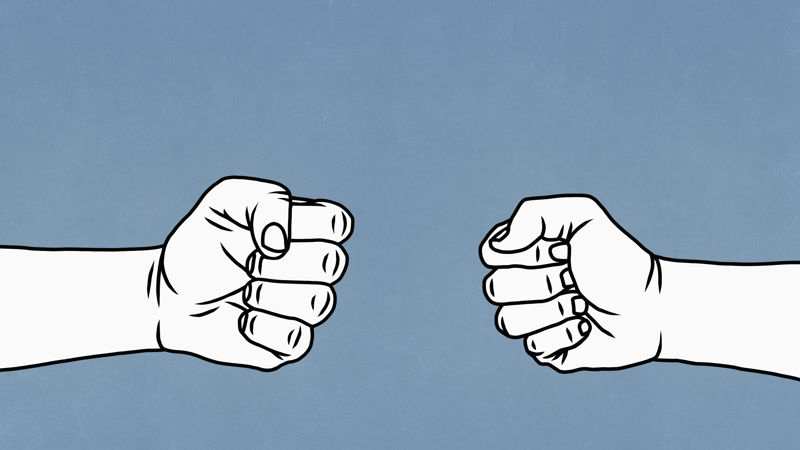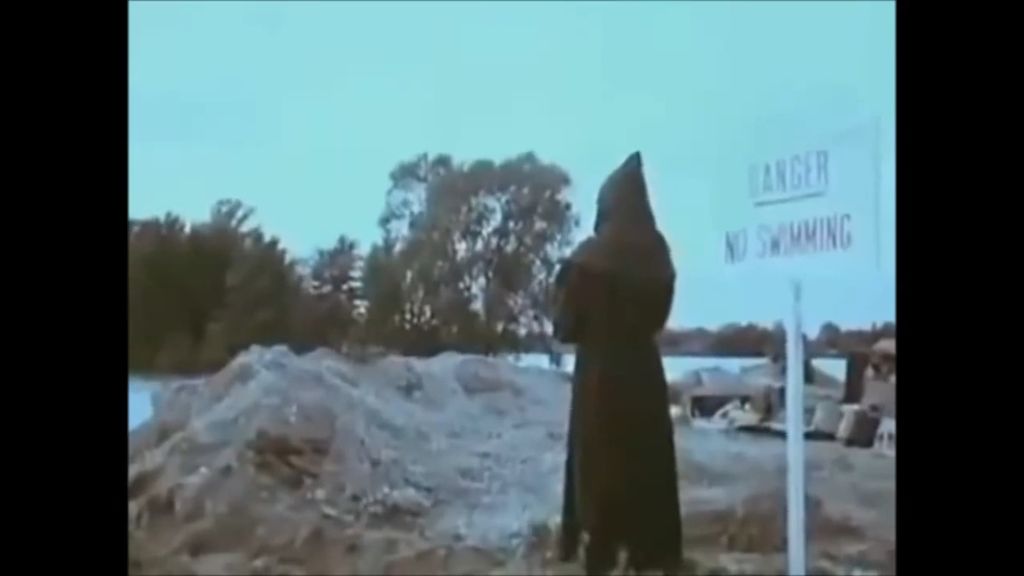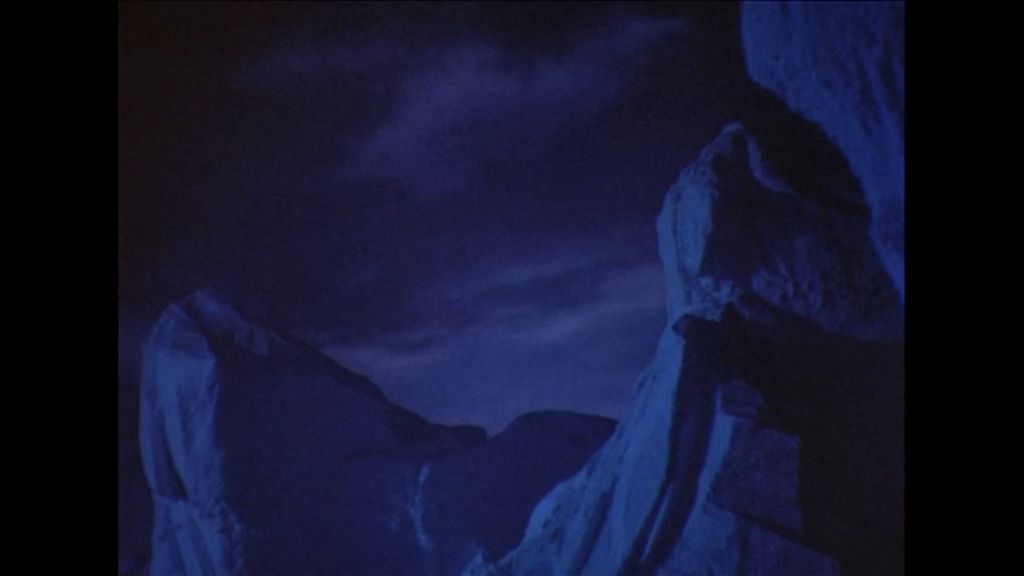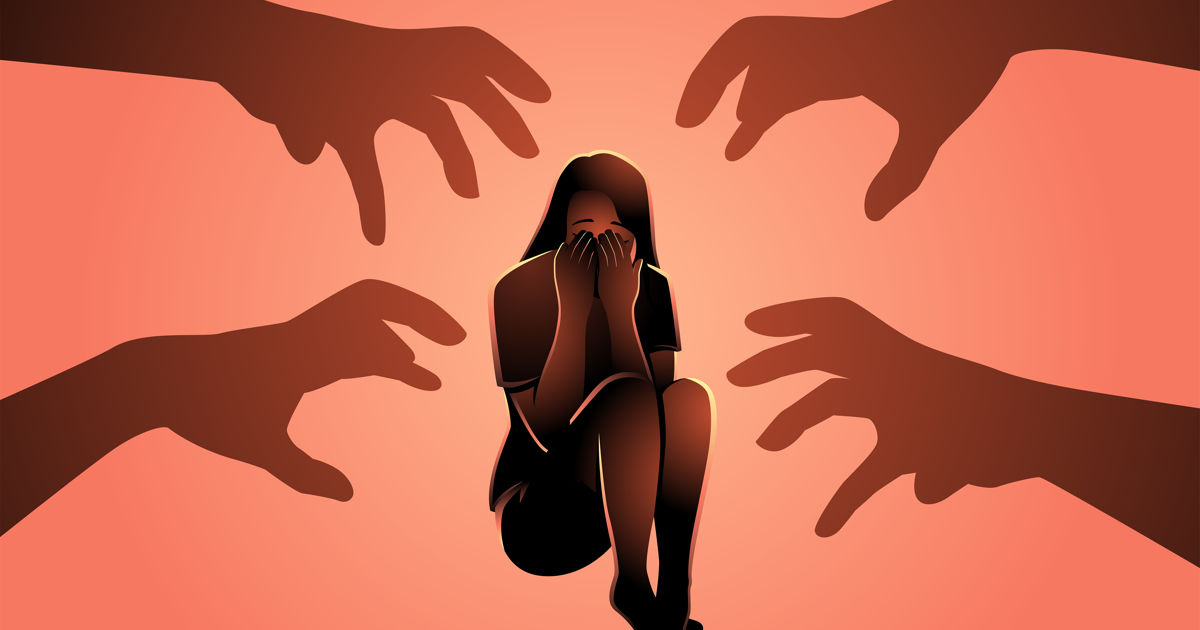The fear factor
Fear is everywhere – a driver for communications as much as of behaviour, but how brands and creatives are resorting to fear is changing. Tim Cumming spoke to industry pros about anxiety in advertising.
Using fear to flip your audience’s switch may not be the most positive of motivators, but fear messaging was a well-trodden path into the dark scary woods of charity and public information films of yesteryear, as per the The Spirit of Dark and Lonely Waters (below).&
It’s a path reiterated in more recent decades via generational campaigns warning of the dangers of heroin, AIDS, Covid, or climate change.
But while the vintage scares of eras past are half-remembered as thrillingly inappropriate rites of passage (they really knew how to terrify kids in the 1970s, what with Jimmy Savile fronting the Clunk-Click car safety belt campaign) subtlety is more in fashion in the 2020s, perhaps because the wider world has turned so chillingly scary.
It wasn’t about creating fear but acknowledging the fear that we all live with in the US, and to think about it in a different way.
As Gordy Sang and Brian Siedband co-founders of Quality Meats Creative in Chicago say, adding a few drops of fear to a campaign rather than piling it on can sharpen a campaign message to a point that carries home, rather than freezing you into a trauma response.
The Spirit Of Dark And Lonely Water (1973)
AIDS Iceberg (1987)
Above: The Spirit of Dark and Lonely Water, a 1973 PSA about the dangers of drowning made for the Central Office of Information; and the UK government's 1980s 'Don't Die Of Ignorance' campaign for AIDS.
Their September 2022 spot, March Fourth, to support a march urging the US Senate to ban assault rifles, used fear as its narrative, rather than its intent, turning on its head the fear of yet another gun massacre by counter-intuitively having a range of people explain why they wouldn’t march on Washington.
We use fear not to get you scared but to give that head tilt, like, ‘I didn’t think about it that way'.
“I like going to the movies and making a mental note of all the exits to plan my escape”. “I want to be fearful in an open area”. “I enjoy practising semi-annual lockdown drills with six year olds who don’t fully understand what’s happening”.
“It wasn’t about creating fear but acknowledging the fear that we all live with in the US, and to think about it in a different way,” says Sieband. “It’s obvious we’re all afraid of the availability of guns, the fact that we’ve all grown comfortable living with these fears, and that that’s normal – we should all be afraid of that.”
Credits
powered by
- Agency Quality Meats/Chicago
- Production Company The BMP Film Company
-
-
-
Unlock full credits and more with a Source + shots membership.
Credits
powered by
- Agency Quality Meats/Chicago
- Production Company The BMP Film Company
- Production Co. LA Golden/Los Angeles
- Production Co. Chicago Quality Meats/Chicago
- Editorial Work Editorial/USA
- Finish Carbon/Chicago
- Sound Fiddle Leaf Sound
- Chief Creative Officer Gordy Sang
- Chief Creative Officer Brian Siedband
- Head of Production Kacey Hart
- Chief Creative Officer Gavin Lester
- Group Account Director Alyssa Tigue
- Post Producer Kara Pierce
- Director Jordan Bahat
- Managing Director Matthew Marquis
- Line Producer Rick Brown
- DP Jon Hamblin
- Executive Producer Ben Mahoney
- Editor Martin Leroy
- Post Executive Post Producer Remy Foxx
- Colorist Bree Brackett
- Producer Natalie Westerfield
- DP Pat Shahabian
- Sound Todd MacMillan
- Production Supervisor Robert Morales

Credits
powered by
- Agency Quality Meats/Chicago
- Production Company The BMP Film Company
- Production Co. LA Golden/Los Angeles
- Production Co. Chicago Quality Meats/Chicago
- Editorial Work Editorial/USA
- Finish Carbon/Chicago
- Sound Fiddle Leaf Sound
- Chief Creative Officer Gordy Sang
- Chief Creative Officer Brian Siedband
- Head of Production Kacey Hart
- Chief Creative Officer Gavin Lester
- Group Account Director Alyssa Tigue
- Post Producer Kara Pierce
- Director Jordan Bahat
- Managing Director Matthew Marquis
- Line Producer Rick Brown
- DP Jon Hamblin
- Executive Producer Ben Mahoney
- Editor Martin Leroy
- Post Executive Post Producer Remy Foxx
- Colorist Bree Brackett
- Producer Natalie Westerfield
- DP Pat Shahabian
- Sound Todd MacMillan
- Production Supervisor Robert Morales
Above: March Fourth - People Who Won't, by Quality Meats.
“It’s more subtle, it’s not jarring fear, not traumatising fear,” adds Sang. “We don’t want to scare the shit out of you, we want to change the way you think about it. We use fear not to get you scared but to give that head tilt, like, ‘I didn’t think about it that way’.”
They’ve taken an even more subtle use of fear in an upcoming spot for a new food chain, with the lead line: ‘this food isn’t weird, open your mind’ working the fear of being closed-minded. “So it’s not saying you’re closed minded, but that if you’re open-minded you’ll go this way, and if you’re not then don’t come here,” says Sang. Either way, it’s a win-win.
A few decades ago advertising was about painting that beautiful world where this product or brand would take you, but now people know better.
“It’s putting your brain in a little argument that you cannot get out of,” adds Sieband. “Like, ‘I’m open-minded, so I have no choice’.”
At a time when values and ethics are becoming a part of a brand’s bottom line, the social media landscape places increasingly strong emphasis on displaying the right kind of values – of sustainability, inclusion, diversity – and the fear for brands as well as consumers of being out of step with those mores, and that fear is a driver of behaviour and of identity.
But for brands to draw on those values, they need to be sure that they’re contributing to change, not exploiting the desire for it.
We hate losing things more than we love gaining things, so on booking websites you always have ‘only a few spaces left’. The fear of losing something you don’t even have yet is so powerful that it makes you want to click.
“Today we have pinkwashing, greenwashing, whitewashing, you can wash anything in any colour, because people feel that brands are overstating their role in getting to the solutions to those problem,” says Bas Korsten, Global CCO from Wunderman Thompson. “
A few decades ago advertising was about painting that beautiful world where this product or brand would take you, but now people know better. You can’t put too much of a veneer on top of things because people see straight through it."
"However," he adds, “if it feels the brand has a right to play in the space, I’m all for them helping out on societal issues. But you have to be real about what you’re promising and what it is you can contribute.”
If it’s too gruesome and too emotional people cannot handle it. That’s human nature. There’s already enough you have to think about.
For Korsten, “love and fear are the two biggest raw emotions that a human has. It’s all about the right dosage. We hate losing things more than we love gaining things, so on booking websites you always have ‘only a few spaces left’. The fear of losing something you don’t even have yet is so powerful that it makes you want to click.”
Fear, he adds, is best framed by providing a resolving solution. If it’s morning breath, then mouthwash has it sorted.
Credits
powered by
-
- Production Company Derby
- Director Bradley Hasse
-
-
Unlock full credits and more with a Source + shots membership.
Credits
powered by
- Production Company Derby
- Director Bradley Hasse
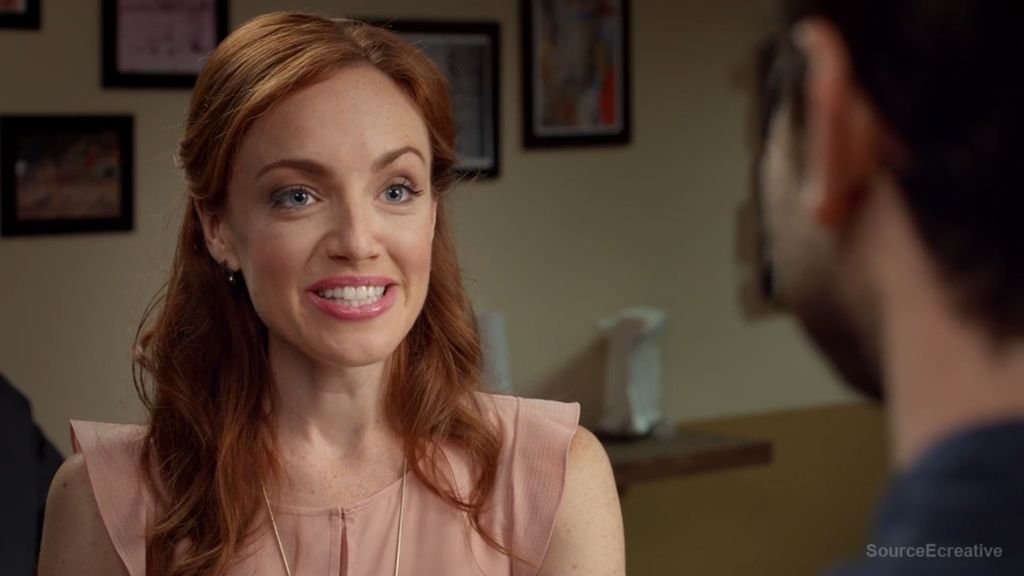
Credits
powered by
- Production Company Derby
- Director Bradley Hasse
Above: A Listerine spot that plays on our paranoia of bad breath.
It’s about the dose, and also balancing the fear versus the solution. If a solution is within reach you can play up the fear more. But if it’s a charity spot highlighting, say, the war in Ukraine or orphans in Syria, successful lines of communication can be a high-wire act. “If it’s too gruesome and too emotional people cannot handle it. That’s human nature. There’s already enough you have to think about."
We’re exhausted by fear,” says Grace. “It used to be that fear was a driver – you have to get that problem sorted, install your carbon monoxide detector or whatever, but now we’re really exhausted by fear.
But if there’s a simple way you can help, that’s when you can use fear for good. It’s about the dose, and also balancing the fear versus the solution. If a solution is within reach you can play up the fear more.”
For Grace Francis, Global Chief Creative and Design Officer at WONGDOODY, in the wake of the pandemic, fear is the medium in which we swim, which impacts the effectiveness of fear as a message driver. “We’re exhausted by fear,” says Grace. “It used to be that fear was a driver – you have to get that problem sorted, install your carbon monoxide detector or whatever, but now we’re really exhausted by fear. It makes us freeze rather than take action.
In the influencer era, we’re more likely to be driven by fear of getting it wrong, whatever ‘it’ is
“Think about adverts in the 1980s and 1990s when fear was easily identifiable – stop this, do this, change this. It’s now hanging over us in this ever-present anxiety while we’re trying to navigate our lives. In advertising, we used to like a clear solution – buy this and things will be fixed – and we used to like a clean fear – don’t do this and things will be fixed. That no longer sits with us the way it used to.”
Credits
powered by
- Agency Uncommon/London
- Production Company Knucklehead
- Director Christopher Hewitt
-
-
Unlock full credits and more with a Source + shots membership.
Credits
powered by
- Agency Uncommon/London
- Production Company Knucklehead
- Director Christopher Hewitt
- Post Production/VFX Electric Theatre Collective
- Audio Post 750mph
- Music Soundtree Music
- Producer Darren Tuohy
- DP Christopher Sabogal
- Editor Lewis Noll
- Colourist Jason Wallis / (Colorist)
- Producer Clare Sullivan
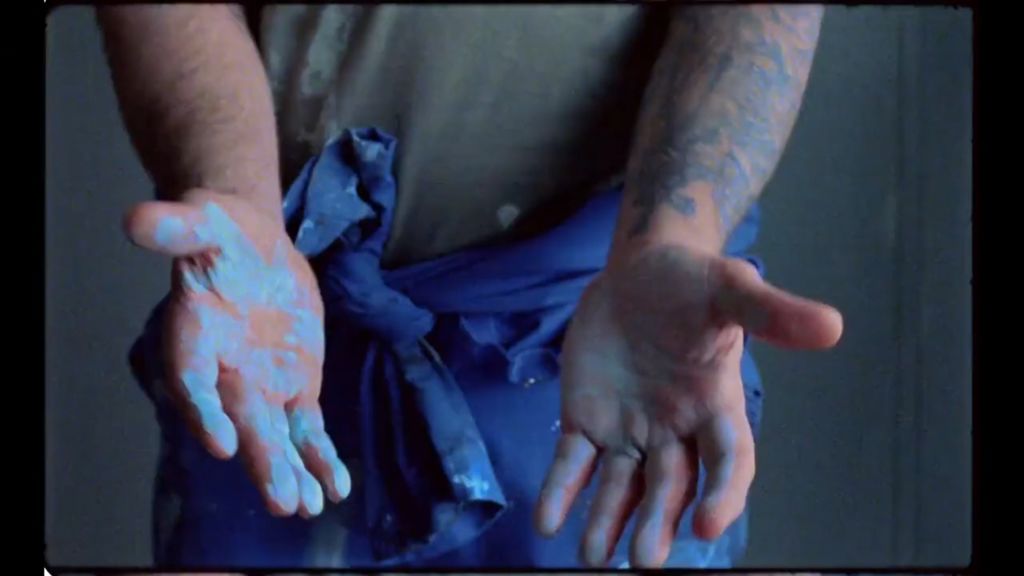
Credits
powered by
- Agency Uncommon/London
- Production Company Knucklehead
- Director Christopher Hewitt
- Post Production/VFX Electric Theatre Collective
- Audio Post 750mph
- Music Soundtree Music
- Producer Darren Tuohy
- DP Christopher Sabogal
- Editor Lewis Noll
- Colourist Jason Wallis / (Colorist)
- Producer Clare Sullivan
Above: B&Q's Build a Life campaign by Uncommon.
Instead, in the influencer era, we’re more likely to be driven by fear of getting it wrong, whatever ‘it’ is. Francis points to the B&Q spot Build a Life from Uncommon. “It feels and looks on the surface really beautiful – yes absolutely, build a life together – but people look at that and think, oh I’m not doing that, I’m getting it wrong’. The fear of doing it wrong exists a lot.”
To look where the fear stems from and how to use it to sell now is interesting, but I would rather not put that into the world
A fear-driven message demands an enemy. For Dove's Reverse Selfie campaign, it’s the social filters used by women and girls to distort their body and their body image. “So the fear becomes ‘technology is evil’,” says Francis, “but I would argue that the problem is the society we live in that tells women they need to be beautiful.”
There’s plenty of anxiety as it is, so I’d rather see advertising as connection, solution and a recognition between the consumer and the brand that immediately brings some relief or joy.
Instead, campaigns built on vulnerability, authenticity and empathy reach the solution faster than fear. “To look where the fear stems from and how to use it to sell now is interesting, but I would rather not put that into the world,” says Francis. “There’s plenty of anxiety as it is, so I’d rather see advertising as connection, solution and a recognition between the consumer and the brand that immediately brings some relief or joy.”
Credits
powered by
- Agency Ogilvy/London
- Production Company Independent Films/London
- Director Benito Montorio
-
-
Unlock full credits and more with a Source + shots membership.
Credits
powered by
- Agency Ogilvy/London
- Production Company Independent Films/London
- Director Benito Montorio
- Executive Producer Verity White
- Editor Scot Crane
- VFX Supervisor/Flame Artist Phil Oldham
- Executive Producer Sally Heath
- Audio Post Munzie Thind
- Composer/Arranger Philip Klein
- Global Creative Director Juliana Paracencio
- Executive Creative Director Daniel Fisher / UK
- Art Director Liam Bushby
- Copywriter Alison Steven
- Senior Copywriter Oliver Jarrott
- Senior Art Director Matt Nankivell
- HP James Brook-Partridge
- Producer Sally Lipsius
- DP Steve Annis
- Producer Simon Eakhurst
- Editor Sam Jones / (Editor)
- Producer Sue Lee Stern
- Design Director Sian Hughes
- Art Producer Chloe Jahanshahi

Credits
powered by
- Agency Ogilvy/London
- Production Company Independent Films/London
- Director Benito Montorio
- Executive Producer Verity White
- Editor Scot Crane
- VFX Supervisor/Flame Artist Phil Oldham
- Executive Producer Sally Heath
- Audio Post Munzie Thind
- Composer/Arranger Philip Klein
- Global Creative Director Juliana Paracencio
- Executive Creative Director Daniel Fisher / UK
- Art Director Liam Bushby
- Copywriter Alison Steven
- Senior Copywriter Oliver Jarrott
- Senior Art Director Matt Nankivell
- HP James Brook-Partridge
- Producer Sally Lipsius
- DP Steve Annis
- Producer Simon Eakhurst
- Editor Sam Jones / (Editor)
- Producer Sue Lee Stern
- Design Director Sian Hughes
- Art Producer Chloe Jahanshahi
Above: Dove's Cannes Lions-winning work, that played on the power of filters.
The current ubiquity of fear as first base in our collective state of being is felt by James Lewis at Insight, Strategy and Creative Studio The Good Side.
Endless economic growth requires new need-states to be constructed to tap into our innate desires and fears.
“Our fear response is constantly being activated by advertising,” he says, “and endless economic growth requires new need-states to be constructed to tap into our innate desires and fears. By activating our evolutionary responses, advertising makes us afraid of being left out, rejected from the tribe.”
We are now experiencing a new phase in social change campaigning, that celebrates community, possibility and progress as opposed to relying on fear factors.
For Lewis, this form of FOMO is the dirty fuel for the unsustainable capitalism. But that fear has its limits, he believes. “We are now experiencing a new phase in social change campaigning, that celebrates community, possibility and progress as opposed to relying on fear factors,” he says.
“Sometimes the purpose of a company can seem to overshadow its real reason for being, which is a commercial one,” says Korsten, sounding a quiet note of caution. “That’s why it’s important for companies to take responsibility when it comes to the messaging on these kind of issues. Be real about what you’re promising and what it is you can contribute to the issue.”
And when it comes to doing the right thing, don’t let fear hold you back.
)

